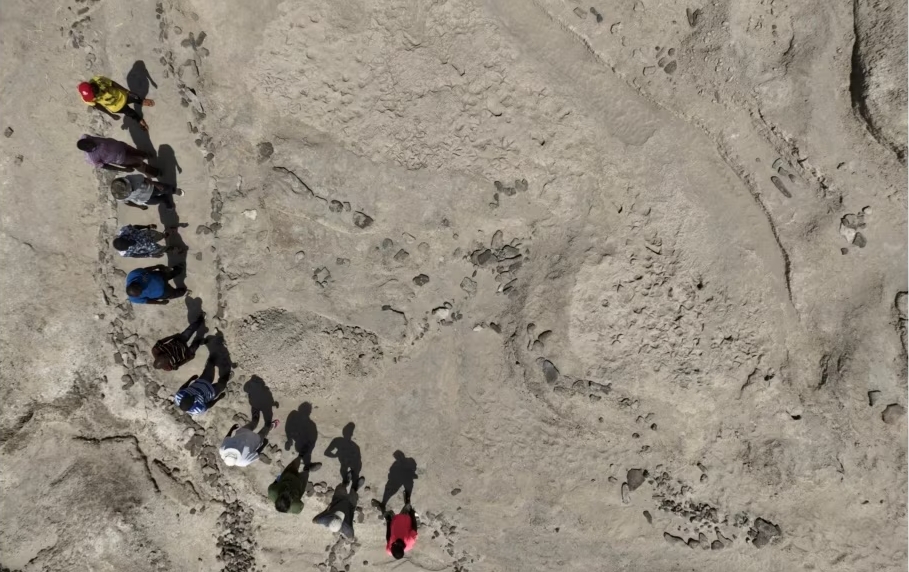Scientists say ancient footprints left in wet dirt on a Kenyan lakeside suggest that two early human ancestors were neighbors about 1.5 million years ago.
Two separate species made the sets of footprints “within a matter of hours, or at most days,” said paleontologist Louise Leakey, a writer of the research published recently in the journal Science. Paleontologists study fossils to learn about the history of life on Earth.
Scientists already knew from earlier fossil finds that these two extinct lines of human development – called Homo erectus and Paranthropus boisei – lived about the same time in the Turkana Basin.
But dating fossils is not exact. “It’s plus or minus a few thousand years,” said paleontologist William Harcourt-Smith of Lehman College and the American Museum of Natural History in New York. He was not involved in the study
Yet with fossil footprints, “there’s an actual moment in time preserved,” he said. “It’s an amazing discovery.”
Researchers found the fossil footprints in 2021 in what is today Koobi Fora, Kenya, said Leaky, who is based at Stony Brook University in New York.
Study co-writer Kevin Hatala is a paleoanthropologist at Chatham University in Pittsburgh, Pennsylvania. He said the two species likely knew of each other’s existence whether they left the prints at the same time or a day or two apart.
“They probably saw each other, probably knew each other was there and probably influenced each other in some way,” Hatala said.
Scientists were able to tell the difference between the two species because of the shape of the footprints. The shape of each informed researchers about the structure of the foot and how it was being used at the time.
Homo erectus appeared to be walking similarly to how modern humans walk – striking the ground heel first, then moving weight over the ball of the foot and toes and pushing off again.
The other species, which was also walking upright, was moving “in a different way from anything else we’ve seen before, anywhere else,” said co-writer Erin Marie Williams-Hatala, a human development anatomist at Chatham.
Among other details, the footprints suggest greater ability of movement in their big toe, compared to Homo erectus or modern humans, said Hatala.
Our common primate ancestors probably had hands and feet fit for grasping branches. But, over time, the feet of human ancestors developed to permit walking upright, researchers say.
The new study adds to a growing amount of research that suggests the change to walking on two feet did not happen at a single moment, in a single way.
Instead, there may have been a number of ways that early humans learned to walk, run and slide on prehistoric muddy hills.
“It turns out, there are different gait mechanics – different ways of being bipedal,” said Harcourt-Smith.
I’m Caty Weaver.
The Associated Press reported this story. Caty Weaver adapted the story for VOA Learning English.
____________________________________________
Words in This Story
species – n. a class of things of the same kind and with the same name
fossil – n. a trace or print or the remains of a plant or animal of a past age preserved in earth or rock
extinct – adj. no longer existing
preserve – v. to keep or save from decomposition
anatomist – n. a scientist who studies the structural makeup of a living organism or any of its parts
bipedal – adj. of, or relating to, walking on two feet
primate – n. any of an order of mammals that are characterized by hands and feet that grasp, a relatively large complex brain, and vision in which objects are seen in three dimensions and that includes human beings, apes, monkeys, and related forms (such as lemurs and tarsiers)
